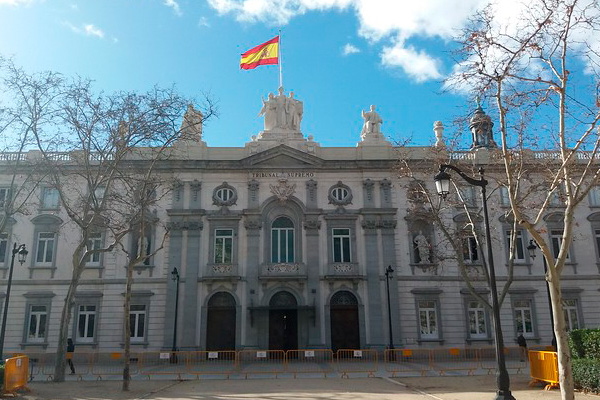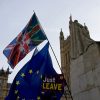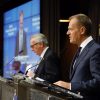Summary
This paper briefly analyses the attempted coup d’état carried out in Spain in February 1981 and the trial that was held in its aftermath, with a view to extracting possible lessons that might prove useful to those currently engaged in post-coup justice in Turkey.
The past as prelude
Spain has had a long history of military interventions in political life. In the 19th century, these generally took the form of a pronunciamiento (literally, ‘a pronouncement’), a ritualised challenge for power on the part of the army which became institutionalised as a mechanism for changing the government in office. Contrary to what is often assumed, not all military interventions were reactionary in nature; the liberal and progressive factions in Parliament also had their supporters within the army. Thus, major pronunciamientos resulted in changes of government in 1820, 1843, 1854, 1868 and 1874. Not surprisingly, the constitutional settlement finally reached in 1876 under King Alfonso XII was largely aimed at removing the army permanently from the political sphere, something it achieved quite successfully until 1923.
In the course of the 20th century, Spain experienced five significant military uprisings (in 1923, 1930, 1932, 1936 and 1981), only two of which were successful (those of 1923 and 1936). The first was carried out by General Miguel Primo de Rivera in September 1923, and was opposed by almost no one and welcomed by many. Although this has sometimes been portrayed as yet another pronunciamiento, it was somewhat different in that it aimed to overthrow not just the government of the day but the parliamentary system created in 1876, replacing it with something new. With the tacit acquiescence of King Alfonso XIII, Primo de Rivera was able to establish a formal military dictatorship (1923-25), which subsequently became a civilian one (1926-29), but he failed to consolidate this as a stable form of authoritarian rule. After losing the support of both the King and the army, Primo went into exile in Paris in 1929, where he died quietly in 1930.
In the wake of his departure, the King sought to revive the political system that had existed until 1923, but without success. It was in this turbulent context that a small group of left-leaning army officers rose against the monarchy on 12 December 1930 in support of the republican parties which were actively plotting for a change of regime. The uprising was a complete failure, and its leaders, Captains Fermín Galán and Ángel García Hernández, who had their headquarters in Jaca, a small provincial town in northern Spain, were subsequently court-martialled and shot, as a result of which they rapidly became prominent martyrs of the republican cause.
The collapse of the dictatorship paved the way for free municipal elections in April 1931, the proclamation of the Second Republic and the departure of King Alfonso XIII. The ambitious progressive agenda of the leftists and republicans who largely won the first democratic elections and later wrote the Constitution of 1931 included a far-reaching reform of the armed forces, which was inevitably resisted by the more conservative elements of the military, who interpreted it as an attempt to emasculate them. Ironically, the leader of the first military coup attempt against the Republic, General José Sanjurjo, who had supported Primo de Rivera’s take-over in 1923, had initially facilitated the monarchy’s downfall in 1931 by refusing to use the para-military Civil Guard units under his command against republican demonstrators. However, Sanjurjo soon became disillusioned with the new regime and in August 1932 he led an uprising against the government from his military headquarters in Seville. Although he initially succeeded in taking control of the Andalusian capital, he failed to attract the support of other senior military figures, and the coup attempt collapsed within days, resulting in 10 deaths and the General’s arrest. Sanjurjo was subsequently tried with 150 others and sentenced to death, but the republican authorities, determined not to make a martyr of him, later commuted this to life imprisonment. However, after winning the second general election held under the Republic in 1933, the new centre-right government adopted a general amnesty in 1934 which freed Sanjurjo and his co-conspirators, most of whom later played a prominent role in the 1936 uprising that would eventually lead to the regime’s destruction.
From Civil War to dictatorship
The most significant military coup ever carried out in Spain was of course the right-wing uprising which took place in July 1936. It is often forgotten that a very significant proportion of the Spanish armed forces remained loyal to the Republic, which explains why the coup was only partially successful. Although it has sometimes been described as ‘the rebellion of the Generals’, this is an inaccurate portrayal of events: out of 18 divisional Generals, including those of the Civil Guard and the Carabineros, only four (one of them being General Francisco Franco) took part in the uprising (the uprising should have been led by none other than Sanjurjo, who was in exile in Portugal, but his death in a plane crash accidentally paved the way for Franco’s rise to pre-eminence). Similarly, only 14 of the 56 brigade Generals who were serving at the time rebelled against the government. Overall, of the 15,301 officers in all branches, corps and services active in July 1936, just over half clearly supported the rebellion. The rebels were in fact defeated in most large cities, including Madrid, Barcelona and Valencia, where they came up against the united resistance of other armed forces loyal to the Republic and political and trade-union militants. The division of the army and the police was thus crucial in thwarting the military rebellion, and in preventing it from achieving its immediate goal, the seizure of power. However, by decisively undermining the republican government’s ability to maintain order, the coup d’etat gave way to a civil war and the violence of armed factions.
This only partially successful coup thus led to a bloody, three-year long civil war, something the insurgents had never expected. Ironically, the war ended with yet another coup in March 1939, led by Colonel Segismundo Casado, which has been seen as a ‘rebellion of the officers’ against a Republican government whose legitimacy they no longer recognised. Casado and his camp assumed that it would be easier to settle the war amongst officers, but Franco insisted on an unconditional surrender, which he finally achieved a few weeks later. According to recent estimates, nearly 600,000 Spaniards died in the conflict, of which 100,000 deaths were due to the repression unleashed by the rebels, and 55,000 to the violence in the Republican zone, while another 50,000 were executed in the decade following the end of the war. Much of this repression was carried out under the authority of the Law of Political Responsibility (1939), which set out to punish ‘any person or body’ that had opposed the July 1936 uprising. In other words, it was those who had remained true to the Republic who were to suffer the consequences of their loyalty, while the rebels savoured the fruits of their disloyalty.
The Nationalists’ victory led to the establishment of a personal dictatorship under Franco that survived until his death in November 1975, the only one in Europe to have emerged as a result of a civil war. For obvious reasons, those involved in the 1936 coup were regarded as heroes by the regime, which portrayed the civil war as a ‘crusade’ against communists, freemasons, separatists and other ‘enemies of Spain’.
The transition to democracy
Spain’s democratising process is a paradigmatic case of a ‘transition through transaction’, characterised by the following features: the (paradoxical) use of the former regime’s institutions and constitutional procedures to initiate the democratising process; negotiations between ‘soft-liners’ in the out-going authoritarian regime and representatives of major opposition groups; the inclusion of representatives of all key political forces in the decision-making process; and private, face-to-face deliberations at crucial stages, involving a relatively small number of participants. Some have argued that ‘transitions through transaction’ are also characterised by relatively low levels of popular mobilisation, but the Spanish experience suggests they are compatible with relatively high levels of pressure ‘from below’ if political actors are willing and able to modulate this in response to concessions made ‘from above’. Some also claim that ‘transitions through transaction’ can only succeed in the absence of political violence, but Spain experienced 453 deaths from political violence in 1975-80; indeed, it was partly the fear that this violence might derail the transition process that encouraged political elites to negotiate in the first place.1
Spain’s relatively brief transition to democracy was launched ‘from above’, but it accelerated in response to mounting pressure ‘from below’. It was essentially driven by domestic actors, though the European Community and some of its member states, notably Germany, actively supported democratisation (through its parties, trade unions and political foundations). Its origins largely reflect the political dilemmas facing King Juan Carlos, who needed to acquire a new democratic legitimacy for the monarchy in order to guarantee both his survival as head of state and the continuity of his dynasty. The monarchy Juan Carlos inherited in 1975 was not the institution embodied by his grandfather Alfonso XIII until 1931, but rather an entirely artificial, authoritarian monarchy designed to perpetuate the regime. However, Juan Carlos did not inherit all of Franco’s powers: the Organic Law of the State (1967) had designed a monarchy in which the King’s role was severely curtailed by the combined authority of the Prime Minister and the President of the Cortes (parliament), who shared effective control over the political system. Paradoxically, this meant that from the outset the King had a vested interest in a constitutional reform that would free him from the tutelage of unelected officials.
In the first stage of the transition, Prime-Minister Carlos Arias Navarro, who increasingly identified with the regime’s ‘hard-liners’, advanced a blueprint for limited reform which would have led to the election of a semi-democratic Cortes and the legalisation of some parties, such as the Socialists (PSOE) but not the Communists (PCE). This was rejected outright by an increasingly active opposition, mass mobilisations (which sometimes resulted in loss of life), new media outlets and the European parliament.
The King’s decision to replace Arias Navarro in July 1976 with Adolfo Suárez, a 44 year-old apparatchik of the former regime, known for his ambition and audacity, was a crucial turning-point. Suárez quickly produced a Law for Political Reform which called for a two-chamber Cortes: a Congress of Deputies elected according to principles of proportional representation, and a majoritarian Senate. In keeping with the procedure envisaged by the Francoist fundamental laws, the bill was first approved by the existing Cortes in November by 425 votes in favour and 59 against. In December, it was ratified by a referendum that recorded a 77% turn-out (with 94% of votes in favour), in spite of the opposition’s decision to abstain on the grounds that it had been excluded from the entire process.
The referendum considerably strengthened Suárez’s hand; it was only after it that he engaged in formal talks with the opposition’s ‘Committee of Nine’. The talks centred on the seven conditions the opposition demanded be met if it was to take part in future elections, which included the legalisation of all political parties and trade unions, the political neutrality of public employees, a generous amnesty, the negotiation of an electoral law and the acknowledgement of regional political identities. In fact, these did not constitute formal negotiations; rather, it was a case of Suárez listening to the opposition’s demands and skilfully translating them into legislation. Most importantly, the talks led to the legalisation of the PCE in April 1977, whose exclusion would have rendered the process illegitimate in the eyes of many Spaniards. This paved the way for the first democratic elections, held in June 1977, which, in turn, produced the ideal outcome: the high turn-out (79%) confirmed their legitimacy, and the strong showing by Suárez’s Union of the Democratic Centre (UCD), which obtained 34% of the vote and 165 out of 350 seats, allowed him to remain in office. At the same time, the PSOE emerged as the leading opposition party with 29% of the vote and 119 seats, well ahead of the PCE, which obtained a mere 9% of the vote and 20 seats, while the neo-Francoist Alianza Popular had to make do with 8% of the vote and a paltry 16 seats.
The final stage of the transition consisted of a series of agreements involving all the major political actors. The first of these were the Moncloa Pacts signed in October 1977, which sought to restore growth to an ailing economy and to curb inflation by means of far-reaching structural reforms and negotiated wage restraint. In return for the latter, the Pacts introduced a new system of direct income tax, which would largely finance the spectacular growth of Spain’s health and education systems in the 1980s. Another major initiative adopted in October 1977 and requiring a broad political consensus was the Amnesty Law, which benefited all those tried for so-called political crimes committed against the Franco regime prior to the recent elections, including ETA terrorists who had been convicted of murder. At the same time, however, it also guaranteed that former servants of the regime would not be investigated or prosecuted for the human rights violations they might have committed in the past, thereby ruling out the possibility of purging the armed forces, the police or the judiciary. The Amnesty Law was thus the most significant expression of the tacit, unspoken agreement reached by former Francoists and the democratic opposition in an effort to prevent Spain’s traumatic past from becoming an insurmountable obstacle on the road to democracy. To some extent, this so-called ‘pact of forgetting’ was built on a widely-held interpretation of the civil war which saw it as a fratricidal tragedy for which both sides shared responsibility. As a result of this legislation, ‘transitional justice’ was to be notoriously absent from the Spanish democratising process.
Thirty years later, in what might be described as a belated attempt at ‘post-transitional justice’, the Spanish parliament finally adopted a highly controversial Law of Historical Memory (2007), which offered reparations to those victimised by past injustices and formally condemned the Franco regime as ‘illegitimate’. Surprisingly, however, the law did not nullify the verdicts of those sentenced by Francoist tribunals, including the kangaroo courts created after the end of the civil war in 1939. Nor did it overturn the 1977 Amnesty Law, making it highly unlikely that anyone associated with the old order will ever face prosecution on human rights charges. What is more, in 2010 a court indicted Baltasar Garzón, the judge who had gained world-wide fame for his indictment of Chilean General Augusto Pinochet, on the grounds that he had abused the powers of his office in his attempt to use the Law of Historical Memory to prosecute former Francoist officials. Although he was later acquitted on this count, other charges forced him to relinquish his judicial post, thereby ending all meaningful efforts to bring the former regime to justice, at least for the time being.
By far the most important product of the transitional consensus was the new democratic constitution adopted after 16 months of negotiations between the representatives of all parliamentary parties, which was put to a referendum in December 1978. The debates that dominated the constituent process centred on the same issues that had plagued the Second Republic, but on this occasion they were dealt with far more pragmatically. The Socialists initially put forward an amendment that would have made Spain a republic, but once it was defeated by the other major parties (including the PCE, which had agreed to recognise King Juan Carlos in return for its legalisation), they quickly endorsed the new parliamentary monarchy. The constitution disestablished the Roman Catholic Church, while at the same time acknowledging the right of all children to receive religious instruction in public schools, and the state’s obligation to support religious schools. In its treatment of economic issues, the new text balanced the preferences of the right against those of the left. It explicitly acknowledged the market economy and protected private property and inheritance rights against unlawful confiscation, but also contained guarantees of the right to strike and commitments to provide a broad range of social services, including social security, health, education, disability and unemployment benefits, as well as the promise of a more egalitarian distribution of income. The constitution also included provisions regulating the devolution of powers from the central government to the autonomous communities (regions), paving the way for the development of Spain’s future semi-federal State of Autonomies; although these efforts initially proved sufficient to accommodate Catalan nationalists, they failed to satisfy their Basque counterparts. Finally, while the Francoist Organic Law of the State (1967) regarded the Civil Guard and the then Armed Police (subsequently reorganised in late 1978 as the National Police) as integral parts of the armed forces, the new constitution (article 8.1) distinguished clearly between the military and the security forces. However, the constitution failed to clarify whether the armed forces were simply part of the public administration (like the postal service, say), and therefore totally subordinate to the government, or an institution with its own peculiar characteristics, which enjoyed a special relationship with their commander-in-chief (and head of state). Thus, although the constitution allowed the King to exercise ‘the supreme command of the armed forces’ (article 62 (h)), it also gave the government control of the ‘civil and military administration and the defence of the state’ (article 97).
Charles Powell
Director, Elcano Royal Institute | @CharlesTPowell
1 Powell (2016), pp. 44-45.
Spanish Supreme Court in Madrid. Photo: Juan Antonio Segal (CC BY 2.0)



